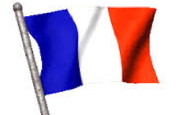 The application of a mechanical stress makes it possible to modify the optical properties of semiconductor quantum dots. For applications in the field of quantum nanophotonics researchers have applied a rigorously identical constraint to a small set of boxes. Their results open promising perspectives in the fields of nanophotonics and quantum sensors.
The application of a mechanical stress makes it possible to modify the optical properties of semiconductor quantum dots. For applications in the field of quantum nanophotonics researchers have applied a rigorously identical constraint to a small set of boxes. Their results open promising perspectives in the fields of nanophotonics and quantum sensors.